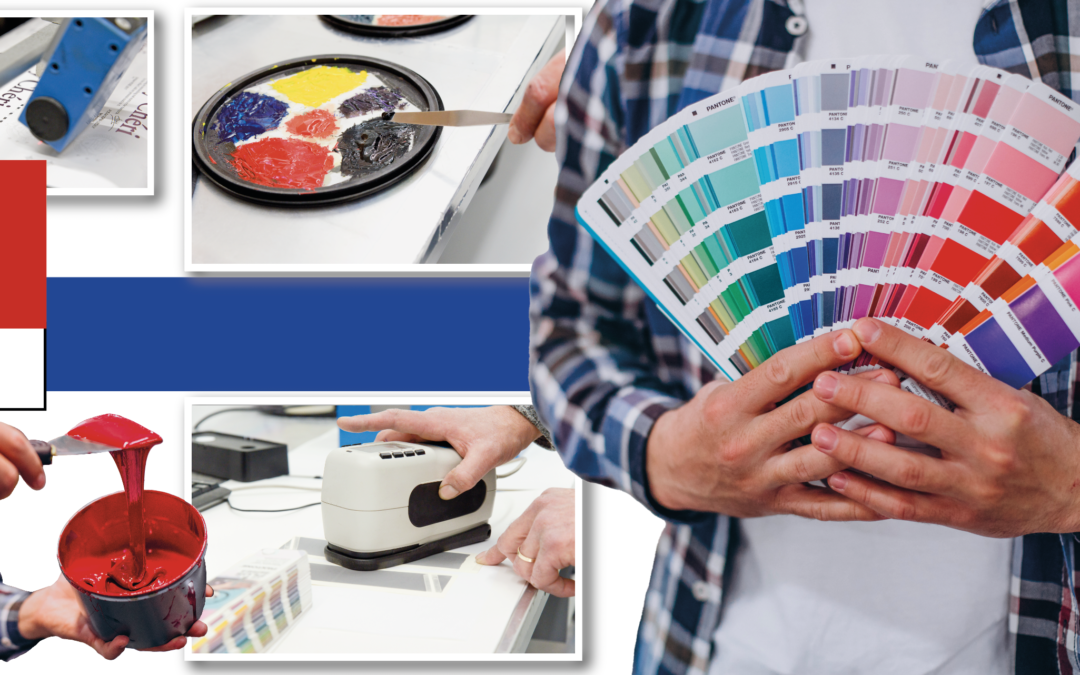In our activity, we work either in four-color-process (Yellow, magenta, cyan and black) which makes it possible to reproduce a large part of the colors, or in Pantone® color, a universal standard commonly used in the field of graphic design and printing with more than 2161 codified colors.
However, to obtain an optimal rendering, which meets the expectations of our customers, we have set up color control systems, both upstream and downstream.
Our colorists analyse and prepare the desired color before printing, taking into account the expected result on the final paper (> discover their work on our YouTube video).
The shade “formula” is then digitally recorded in our databases.
Thus we ensure the continuity of the color from one print to another. We secure the expected rendering of the color before the final print in relation to an existing customer label, a bottle capsule for our wine and spirits customers, the color of a lipstick or a nail polish for cosmetics. We make the formulation then we print a touch of color in the laboratory on the right paper to obtain the final result and guarantee the best deltaE with a Spectro, a color measuring device.
With the colors prepared in advance in the station, during the proofing, we can always adjust the density but not modify the tint.
In all our printing houses, in the machine, we secure color conformity thanks to several systems:
The creation of the inking profile according to the file
Importing into a DTP interface with inkwell control to define the flow rate
The ability to save this profile as soon as the batch is validated in order to use it during the next printing
The online spectro, which will detect color deviations during the draw with the detection of the experienced eye of our drivers,
Controlling the inkwells to correct the color and remeasure it is a closed loop!
But we also take manual samples every 30 minutes maximum, monitoring with standardised lighting and a whole digital tracing and production sample completes the whole thing.
Tolerance is commonly defined by the delta E, the human eye detects color variations from a delta E greater than or equal to 3. The standard on our sites is a deltaE of 2.5. We can adapt to more restrictive requests of course!
To find out more, make an appointment with our sales department: contact@inessens.fr
